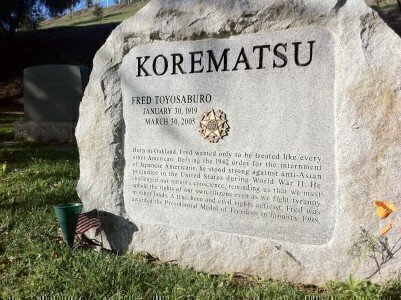On this day in 1942, President Franklin Roosevelt issued his most-controversial executive order, an act that sent more than 100,000 people to government-controlled facilities because of their ethnicity.
On December 7, 1941, Japanese military forces attacked the United States base in Hawaii without warning. More than 2,000 Americans died in the attack, and a united Congress answered President Roosevelt’s request for war.
Roosevelt issued Presidential Executive Order 9066 on February 19, 1942, after fears generated by the Japanese attack made the safety of America’s West Coast a priority. He directed the military to isolate any citizen, if needed, from a 60-mile-wide coastal area from Washington state to California and extending inland into southern Arizona.
The executive order didn’t specify Japanese-Americans as a group, but the U.S. military detained more than 100,000 people in the next six months and moved them to camps and facilities with armed guards and barbed wire.
There were 10 camps set up nationally, and about 120,000 people were interned in the camps during the war. About two-thirds of them were Japanese-Americans who were born in the United States. People of Italian and German heritage were also detained.
The controversial moves were met with legal challenges, which eventually were unsuccessful in freeing the detainees from the camps, despite the serious constitutional issues involved.
Under another provision, called Exclusion Order No. 34, a Japanese-American citizen named Fred Toyosaburo Korematsu was arrested for going into hiding in Northern California after refusing to go to an internment camp. Korematsu appealed his conviction through the legal system, and the Supreme Court agreed to hear the case in late 1944. The court had heard a similar case in 1943, Hirabayashi v. United States, and decided that Gordon Hirabayashi, a college student, was guilty of violating a curfew order.
The Korematsu v. United States decision referenced the Hirabayashi case, but it also ruled on the ability of the military, in times of war, to exclude and intern minority groups. The Court ruled in a 6 to 3 vote that the government had the power to arrest and intern Fred Korematsu. Justice Hugo Black, writing for the majority, included a paragraph that is still debated today:
“It should be noted, to begin with, that all legal restrictions which curtail the civil rights of a single racial group are immediately suspect. That is not to say that all such restrictions are unconstitutional. It is to say that courts must subject them to the most rigid scrutiny. Pressing public necessity may sometimes justify the existence of such restrictions; racial antagonism never can,” Black said.
Later in the decision, Black explained the necessity of the military’s decision. “Korematsu was not excluded from the Military Area because of hostility to him or his race. He was excluded because we are at war with the Japanese Empire because the properly constituted military authorities feared an invasion of our West Coast and felt constrained to take proper security measures, because they decided that the military urgency of the situation demanded that all citizens of Japanese ancestry be segregated from the West Coast temporarily,” he said.
The three dissenting Justices said Korematsu’s constitutional rights had been clearly violated. “I dissent, because I think the indisputable facts exhibit a clear violation of Constitutional rights,” said Justice Owen Roberts.
“Such exclusion goes over ‘the very brink of constitutional power,’ and falls into the ugly abyss of racism,” said Justice Frank Murphy. “The broad provisions of the Bill of Rights… are [not] suspended by the mere existence of a state of war. Distinctions based on color and ancestry are utterly inconsistent with our traditions and ideals.”
Justice Robert Jackson’s dissent highlighted both the racism that Murphy mentioned and that while military orders were not normally subject to judicial review, “A military order, however unconstitutional, is not apt to last longer than the military emergency. Even during that period, a succeeding commander may revoke it all. But once a judicial opinion rationalizes such an order to show that it conforms to the Constitution, or rather rationalizes the Constitution to show that the Constitution sanctions such an order, the Court for all time has validated the principle of racial discrimination in criminal procedure and of transplanting American citizens.”
On the same day, the Court said in another decision, Ex Parte Endo, that the government couldn’t detain an “admittedly loyal citizen” indefinitely. The decision paved the way for Japanese-Americans to return to the West Coast, but it also didn’t contravene the Korematsu decision.
In subsequent years, the American internment policy has been met with harsh criticism. In 1988, Congress awarded restitution payments of $20,000 to each survivor of the 10 camps.
As part of the Civil Liberties Act of 1988, Congress apologized “on behalf of the people of the United States for the evacuation, relocation, and internment of such citizens and permanent resident aliens.” In 1983, federal courts had also overturned the original convictions of Hirabayashi and Korematsu. Also, the Supreme Court’s decision in Trump v. Hawaii (2018) effectively ended the Korematsu ruling’s legitimacy as precedent.








